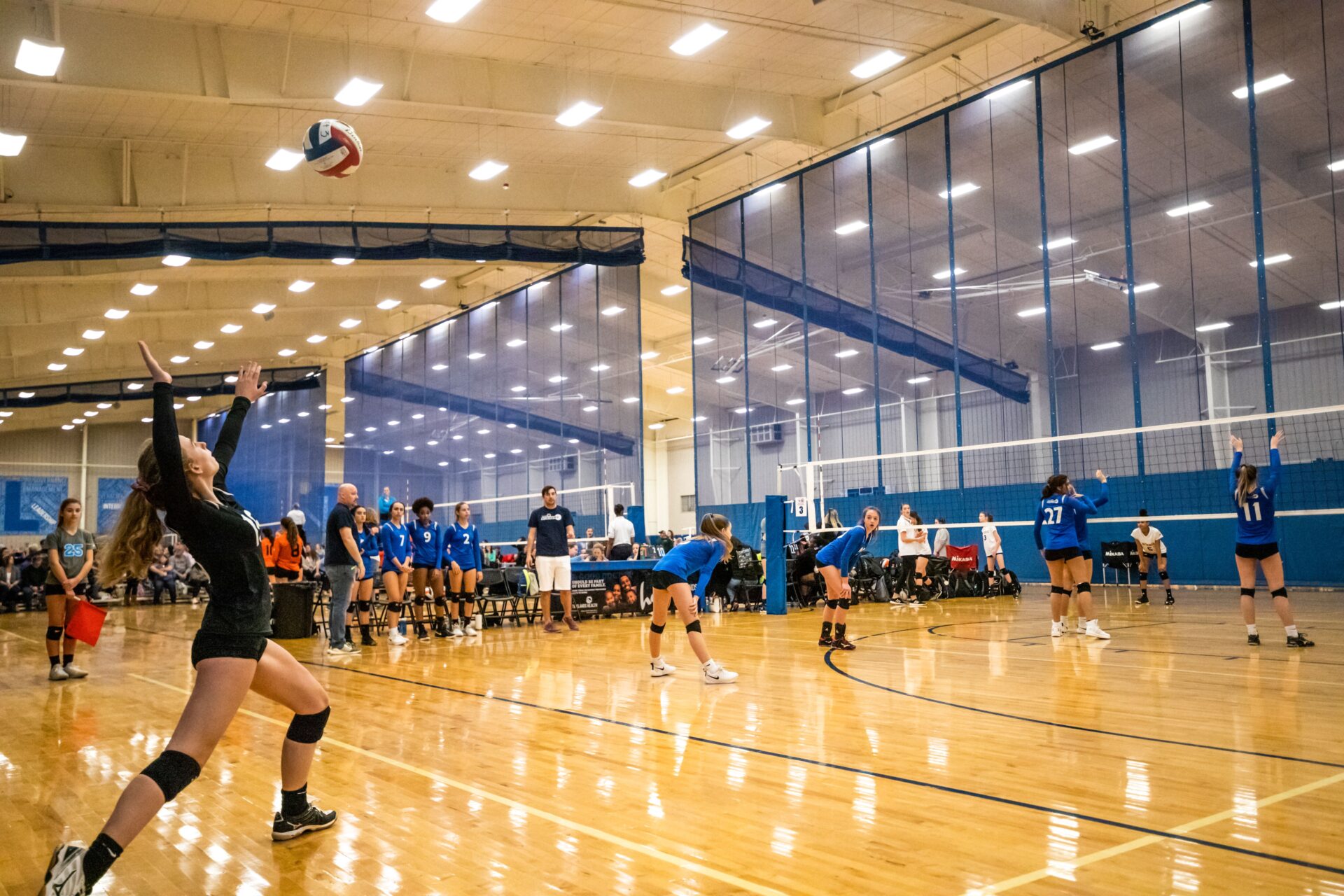
How volleyball became a worldwide sensation—and a planner’s dream sport
In 1895, in the small town of Holyoke, Mass., a YMCA physical education director named William Morgan had an idea that would change the world of sports, whether he knew it or not. Inspired by elements of baseball, basketball, tennis, and handball, Morgan sought to create a game that was less physically intense than basketball but just as engaging. His original version, which he called “mintonette,” was played in nine innings and featured just a few players per team.
Volleyball’s rapid rise in popularity in the early 1900s was due in large part to the YMCA’s strong international network. Within just a few years, the game had been introduced to countries like China, Japan, and the Philippines, where variations on the game began to develop. In the Philippines, for instance, players began using the “set” and “spike” (now essential volleyball techniques) decades before they became standard in the U.S. This international input helped shape the modern version of the game.
Thanks to its introduction at the local YMCA, mintonette gained popularity quickly. Soon, international YMCAs spread the game throughout Asia and beyond. By the early 1900s, a specially designed ball was developed, and the sport was renamed “volleyball.” Over the next two decades, the game’s rules were standardized, and national federations began forming in countries like the U.S., Russia, and Japan.
Volleyball’s global momentum grew rapidly during both World Wars, as soldiers played the game recreationally across continents. After the wars, the sport’s popularity surged in Europe, and in 1947, Paul Libaud of France convened 14 countries to form the Fédération Internationale de Volleyball (FIVB), which still governs the sport today. Libaud served as the organization’s president until the 1980s.
As adult and amateur volleyball found its footing, youth players weren’t far behind. An official junior development program launched in the 1960s, setting the stage for the sport’s Olympic debut in Tokyo in 1964. Though the USSR dominated the early years, other countries—including the U.S.—rose to the challenge. Team USA claimed its first men’s gold medal in 1984 in Los Angeles and followed it with another in Seoul in 1988.
While men’s volleyball gained early Olympic recognition, women’s volleyball also took off quickly, debuting in the same 1964 Games. Japan claimed the first women’s gold on home soil, sparking intense global rivalries, especially with the Soviet Union. Over time, countries like Cuba, China, and Brazil became dominant forces, and by the 2000s, women’s volleyball had become one of the most-watched Olympic sports, thanks to its fast-paced action and international parity.

From sand courts to the spotlight: beach volleyball’s breakout
While traditional volleyball was growing, its sand-court cousin was quietly building a following of its own. Beach volleyball can trace its roots to Hawaii in 1915, when George David, Center of the Outrigger Canoe Club, set up a net in the sand for summer play. It wasn’t long before pickup matches drew crowds. In the 1960s, the sport caught a wave in California, aligning perfectly with surf culture and the “beach lifestyle” promoted by films like Beach Blanket Bingo.
After a brief dip in popularity, beach volleyball surged back when the International Olympic Committee made it an official Olympic sport for the 1996 Atlanta Games. That spotlight helped propel Team USA into dominance, collecting 11 Olympic medals to date.
By the early 2000s, the AVP (Association of Volleyball Professionals) had cemented itself as the premier domestic beach volleyball tour in the U.S. With stops in cities like Chicago, New York, and Honolulu, the AVP helped cities drive tourism, sponsorships, and media coverage. Internationally, the FIVB Beach Volleyball World Tour drew massive crowds in Brazil, Austria, and China. For event planners, these tournaments offer a blueprint: beach volleyball can be packaged as both sport and entertainment, attracting spectators with music, vendors, and a festival-like atmosphere.
In 1997, the FIVB launched the official Beach Volleyball World Championships. Brazil quickly became a powerhouse, amassing more than 10 titles in the competition’s short history.
American stars Misty May-Treanor and Kerri Walsh Jennings elevated the sport to pop culture status, winning Olympic gold in 2004, 2008, and 2012. Their charisma and dominance inspired a new generation of athletes—and fans—making beach volleyball a permanent fixture in global sports.

convention centers. Getty Images
Volleyball today: what planners need to know
Few sports offer what volleyball does: fast-paced, highly athletic gameplay that’s both gender-inclusive and easily adapted to different venues. It’s played indoors, on beaches, in schools, clubs, rec centers, and professional arenas. For sports event planners, that makes volleyball one of the most flexible and scalable event opportunities in the amateur space.
Event planners who host volleyball tournaments say flexibility is one of the sport’s greatest assets. It’s possible to stage an eight-court tournament in a high school gym, or build a temporary sand court downtown—it’s that adaptable. Key considerations include ceiling height for indoor events, proper sand depth and drainage for beach courts, and spectator seating. Some cities even co-host volleyball alongside other sports in multi-disciplinary youth festivals to boost attendance and local spending.
Nationwide, volleyball events are booming. The Amateur Athletic Union (AAU) regularly reports record-breaking participation at its national championships in Orlando. USA Volleyball’s Junior National Championships bring tens of thousands of athletes and spectators to host cities, with a massive economic impact. On the beach, events like the AVP Pro Tour and junior qualifiers draw crowds to destinations like Huntington Beach, Manhattan Beach, and Gulf Shores.
For destinations and venues, volleyball offers multiple points of entry:
Indoor volleyball can be hosted in school gyms, collegiate arenas, or multi-court complexes.
Beach volleyball works well in resort towns, waterfront parks, or even temporary courts built in parking lots or convention centers.
Youth tournaments can span age groups from 10U to 18U, drawing family travel parties and supporting hotels, restaurants, and local attractions.
Volleyball’s role in school and college sports
Volleyball is now one of the most-played sports at the high school level in the U.S., particularly among girls. According to the National Federation of State High School Associations (NFHS), more than 470,000 girls and 85,000 boys play high school volleyball each year. At the collegiate level, women’s volleyball is growing rapidly, thanks to expanded scholarship opportunities and increasing broadcast coverage on ESPN and regional sports networks. Club and intramural volleyball programs are also thriving at colleges, presenting opportunities for event planners to partner with campus facilities for tournaments and camps.

The rising cost of play—and a call to action
Despite the sport’s success, a pressing concern is that volleyball is increasingly becoming a pay-to-play sport. Club fees, tournament travel, uniforms, and training can total thousands of dollars annually. For families without the financial means—especially in rural or underserved areas—that’s a barrier too high.
While high school and middle school programs still provide access points, the pipeline to collegiate scholarships and elite competition often runs through club play. As volleyball’s popularity grows, there’s a real risk that it becomes exclusive to those who can afford it.
That’s where sports event planners, parks departments, and governing bodies can make a difference. Affordable, community-based tournaments, entry-level festivals, developmental leagues, and grant-supported clinics are all tools that planners and organizers can use to keep volleyball accessible and growing.
Global growth and the road to LA 2028
The FIVB continues to invest in volleyball’s global expansion through grassroots initiatives and digital content. Emerging markets like India and sub-Saharan Africa are seeing increased youth engagement, while new leagues in Europe and Asia aim to professionalize the sport further. With the LA 2028 Summer Olympics on the horizon, organizers expect another surge in interest, especially in the U.S., where both indoor and beach volleyball will take center stage on home soil.









